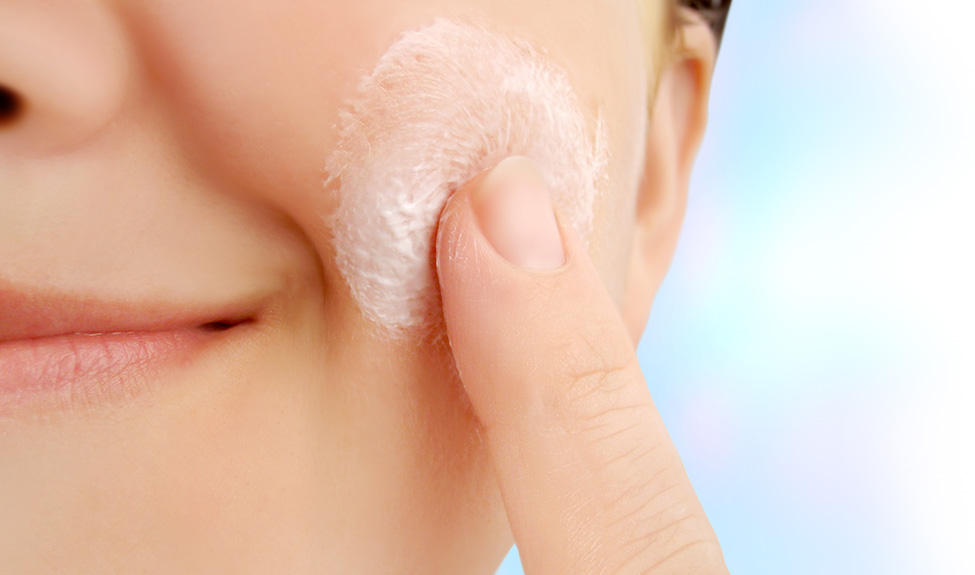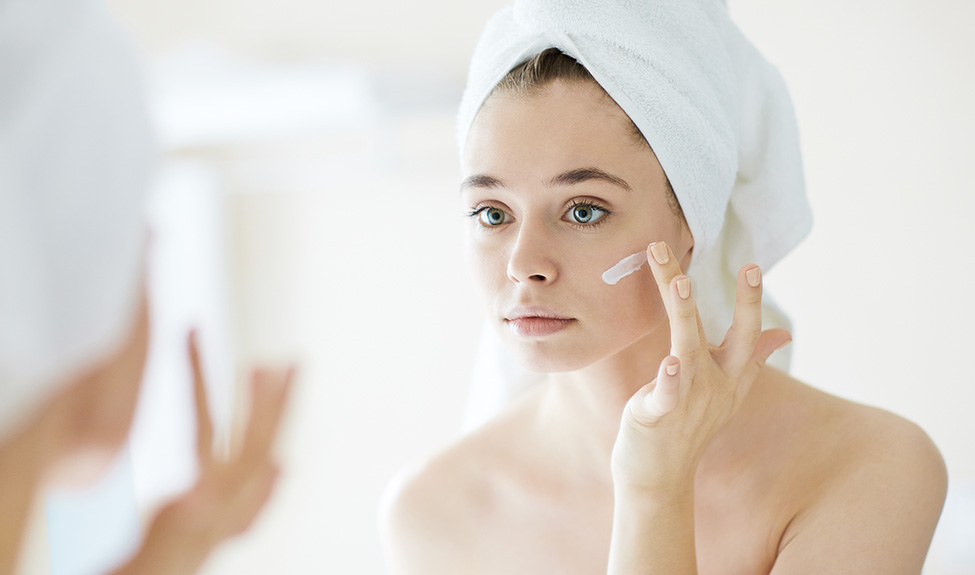If your clients want to maintain the results of their professional treatments and enjoy healthy, radiant skin, an at-home skincare routine is essential. Twice-daily cleansing and moisturizing is a must, but aside from that your clients should feel free to design a regimen that works for their skin, their budget, and the amount of time they’re willing to dedicate.
Even if your client chooses not to follow a 10-step skincare routine, it’s still important they understand the proper order in which to apply the products they do use. Layering skincare products can enhance their results, but only if they do it properly.
Here’s what your clients need to know about layering skincare products and why the order of application matters.
Why Does the Order Matter?
Clients who keep things simple with a cleanse-and-moisturize regimen may not need to be taught in which order to complete those steps. For more extensive routines, however, it can be confusing trying to figure out whether to apply serums, spot treatments, and other skincare products.
While it may not make a significant difference if your client swaps the order of their spot treatment and eye cream, there’s a method to layering skincare products. Doing it incorrectly could prevent one product from absorbing properly or even contribute to a negative skin reaction.
Remind your clients that the skin’s primary job is to keep potentially harmful things out of the body. When it comes to skincare, however, there are ingredients we want to penetrate the skin’s surface. Even perfectly formulated products will only penetrate the skin to a limited degree and applying products in the wrong order may prevent them from being absorbed at all.
The Proper Way to Layer Skincare Products

Even if your clients aren’t interested in memorizing a lengthy list, they should be able to remember this simple rule: apply skincare products from lightest to heaviest.
1. Cleanser
Every good skincare routine starts with a thorough cleanse. Removing makeup, surface oil, and impurities from the skin prepares it to absorb the rest of your skincare products. Even if your clients don’t have the energy for a full cleanse in the morning, simply splashing their face with warm water or using a fast and effective micellar water is a good way to start the day.
Be sure to recommend cleansers appropriate for the client’s skin type. Gel cleansers work well for oily and acne-prone skin while cream cleansers are geared toward dry and sensitive skin types. For combination skin, something in-between like a foam cleanser may be appropriate.
2. Toner
For many years, toners were alcohol-based — drying and irritating the skin in order to “tone”. More modern toners, however, deliver a healthy dose of hydration and often contain ingredients tailored to specific skin concerns. It’s best to apply a spritz of toner right after cleansing when the skin is still damp.
Again, different toners work best for different skin types. Hydrating toners are ideal for individuals with dry or sensitive skin and can be applied both in the morning and at night. For clients with oily or acne-prone skin, suggest something that contains ingredients to help energize and unclog the pores and prevent breakouts.
3. Serum
To skincare novices, the word serum might be confusing. A serum is simply a concentration of hydrators, antioxidants, or other nutrients that give the skin a boost. It may be wise for clients who are new to a skincare routine to skip this step, but every skin type can benefit from a good serum.
Vitamin C serums are perfect for clients concerned about hyperpigmentation or uneven skin tone – it also helps protect the skin against inflammation and environmental damage. For clients with sensitive skin, however, some vitamin C serums can be a little strong, so you may want to recommend every other day usage until the skin can adapt. Keep in mind that oil based Vitamin C serums are better tolerated by sensitive skin.
Any skin type can benefit from a hyaluronic acid serum for a boost of hydration, especially if the skin is dry or irritated from acne treatments or anti-aging products.
4. Eye Cream
After the cleansers, toners, and serums it’s time for moisturization. Make sure your client understands, however, that even within this category it’s important to work from lightest to heaviest.
Eye creams tend to be much thinner and lighter than facial moisturizers, so they should be applied first. These products are ideal for mature skin as they provide a little extra care to the delicate eye contours. For many clients, however, an eye cream is a beneficial add-on but not completely necessary.
5. Spot Treatment
Like eye creams, spot treatments are designed to be applied in limited amounts to specific parts of the face. Spot treatments should be applied gently before the moisturizer so it can penetrate the skin to the fullest extent possible.
Clients with acne-prone skin can benefit from a ichthammol and bisabolol spot treatment. Icthammol kills surface bacteria while bisabolol soothes the inflammation seen with breakouts. For clients concerned about dark spots or acne scars, a spot treatment that contains natural forms of hydroquinone contained in red and brown algae, or niacinamide (a form of Vitamin B3) may be more beneficial.
6. Moisturizer
One of the most important elements in any skincare routine is the moisturizer. Hydrated skin is healthy skin, pure and simple. Moisturizer will generally be the last step in any skincare routine (aside from sun protection, of course). Not only does a good moisturizer impart hydration, but it also helps lock the products underneath in place, so your clients receive the maximum benefit.
Clients with dry skin can benefit from cream-based formulas, especially those that contain hyaluronic acid, lipids, and proteins. A lightweight moisturizer is recommended for clients with oily skin – a gel-based formula may make the skin feel less greasy than a cream moisturizer. Recommendations for clients with acne-prone skin should be based on the client’s skin type.
If your client has very dry skin, you might even recommend a facial oil. These really help seal in the moisture and other ingredients that have been applied to the face. Facial oils do not, however, tend to moisturize the skin very effectively so they should be used in conjunction with a moisturizer, not in place of one.
7. Sunscreen
The final step in any skincare routine should always be sun protection. Sunscreen isn’t designed to penetrate the skin – it sits on the surface to protect against UV rays. Because it isn’t adding anything to the skin, and because it may interfere with the absorption of other products, it should always be applied last. Remember to recommend SPF 30 at a minimum.
If your client is just getting started with skincare, it’s wise to keep it simple. Suggest a basic routine of cleanser, moisturizer, and sun protection with once or twice weekly exfoliation. Clients who are versed in skincare basics may be interested in a more comprehensive routine in which case it may be appropriate to recommend serums and spot treatments.
As a skincare professional, it’s your job not only to deliver skincare treatments but to ensure your clients have the tools and products they need to maintain their results at home. Understanding the basics of layering skincare products is a great first step.

